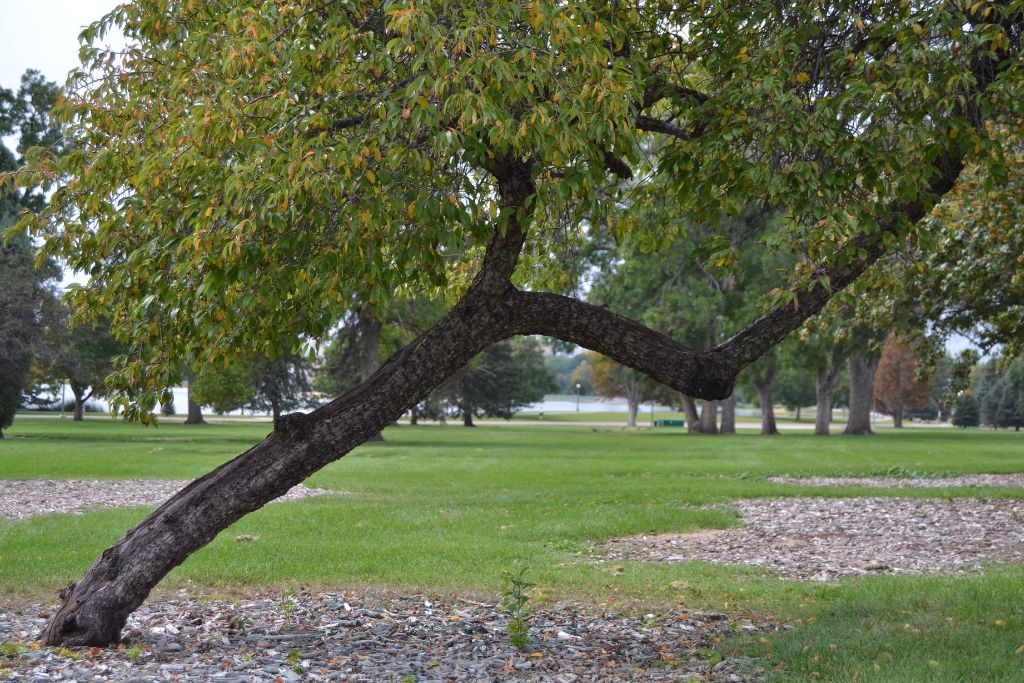Blog, Home Tree Care, Plant Health Care
Protect Your Trees: Watch For Signs Of Stress
Trees may seem to stand silently outside, day and night, through perfect weather and miserable conditions. And when they suffer from damage, disease or inadequate care, many homeowners are surprised to learn their tree – or trees – were suffering from serious, worsening problems. But that can be avoided by paying attention to the many warning signs trees may present when they are stressed.
By watching for these subtle indicators that a tree is stressed, you can help your trees not just survive, but thrive. So, watch for these signs one, some or all of your trees are in trouble:
A Leaning Tree Is Issuing A Dire Warning
While many trees naturally lean, often due to how or where they were planted, soil conditions, wind or other factors, if you notice a tree has begun to lean more severely or in a different direction, taking a closer look may save your tree.
A tree that suddenly leans may have been damaged by wind, flooding may have weakened its root system on one side. This leaning is a warning that the tree is stressed and may fall. And this can be a threat to buildings, homes, motor vehicles, people or pets.
A suddenly leaning tree doesn’t necessarily spell disaster or the end for a tree. Experienced arborists can assess the problem and in many cases save the tree by bracing it or through the use of dynamic cabling. But the sooner the problem is addressed, the better.
Cracking, Splitting And Hanging Limbs Are All Signs Of Stress
Cracks – usually at the base of a large limb – a split, or a severely sagging limb are all signs a tree is stressed. And this stress usually is caused by one of two factors.
First, a tree may be compromised structurally, in many cases by severe wind, a heavy snowfall or an ice storm. Wind can exert tremendous force on a tree, and snow or ice accumulating on branches can total thousands of pounds of weight on a large tree. These forces can bend, crack, or break limbs and even split trunks.
Second – and more insidious – a tree may be suffering from a disease that is either weakening it or causing decay, which may not be visible to the casual observer. As with a leaning tree, an experienced arborist can examine the tree, diagnose the cause, and in many cases, develop a solution that will save the tree.
Changes In Leaves Can Be An Indicator A Tree Is Stressed
Most trees have healthy looking, green leaves during the spring, summer and early fall. Normally, the leaves on deciduous trees such as oaks, elms, maples and birches turn yellow, orange and/or brown in the fall and drop to the ground.
However, trees dropping leaves in the summer, or having discolored leaves, or leaves that are wilted around their edges or have holes, are often stressed by any of a wide range of diseases. They may also be infested with pests which can damage the tree in the short-term and eventually kill it. These symptoms can also be linked to poor fertilization or even over fertilization.
Early leaf drops can also be an indicator that a tree is struggling to handle high temperatures and low moisture in the soil. Watering the tree and spreading approximately three inches of mulch around the base of the tree can help the soil around the tree retain moisture.
Again, changes in leaves are best assessed by a professional arborist.
Mushrooms Around A Tree’s Trunk?
Mushrooms growing around a tree’s trunk – or on the tree itself – can indicate the presence of mold or decay in or around the tree. These can be serious afflictions that can be fatal to a tree if not diagnosed and treated quickly and properly.
Effective treatments for many of these afflictions are available though. But it’s important to properly diagnose the problem.
Are Your Trees Exhibiting Stress Symptoms? Consult With The Experts At Hansen’s Tree Service Today!
Our certified arborists are experts at diagnosing stressed trees and developing effective treatments that may save a tree. Their extensive diagnostic experience can make a crucial difference when it comes to helping your trees. If you notice any of the above signs of stress, turn to our experts for help.
Contact us today and let our insured, experienced professionals take care of all your tree-related needs!
